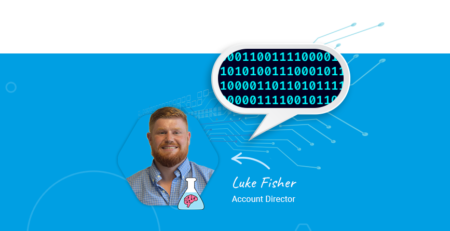How to get employee onboarding right in a remote working world
Onboarding is a pretty straightforward task. Sort out the paperwork, set up some introductions, hand over a laptop, and you’re good to go, right? Think again.
The importance of onboarding is often understated. Frequently overlooked as an administrative task, many employers are forgetting that onboarding provides a prime opportunity to get the individual invested and engaged long term. And with remote onboarding becoming the ‘new normal’, it’s especially important to adapt right now. An effective process makes the new hire feel valued as a member of the team and increases job satisfaction from day 1, despite the physical distance.
Don’t just take our word for it, though. The Society of Human Resources Management provides some clear evidence to support our claims, focusing on 3 key areas:
- Retention: 69% of employees are more likely to stay with a company for three years if they experienced great onboarding.
- Productivity: Organisations with an effective onboarding process experience 50% greater new-hire productivity.
- Engagement: 54% of companies with dedicated onboarding programs reported higher employee engagement.
So, now we know why we need to get onboarding right, let’s consider how we can successfully put this into practice and reap the benefits. Here are our words of wisdom on how to elevate your onboarding process from admin to admirable.
Introduce and Integrate
We all know that a key aspect of successful onboarding is ensuring the new hire meets the right people. In the remote working world, it’s even more important to go the extra mile.
Put processes in place to maximise these friendly interactions. Schedule daily ‘stand-ups’ with teams to give the new hire a smooth start. Ensure they’ve been announced and introduced company-wide so people know to reach out and say hello. Pack the new hire’s first day schedule to ensure they not only feel engaged and purposeful, but are meeting as many people in the organisation as possible. Let’s also not forget to make the roles and remit of HR, managers and the Senior Team clear. The new joiner should know exactly who’s the ‘go to’ for any challenges.
Knowing plenty of familiar faces is super important to make employees feel a part of the organisation. We’re all missing the corridor chat and it’s often these interactions that make people feel most included. Book in virtual team socials, company updates and one-to-ones to facilitate this. Think ‘organised fun’ and schedule in these previously organic integrations. And make sure there’s variety in the events. Whether it’s company-wide, team-specific or an individual chat, these are all equally important to get the new hire feeling comfortable and invested in both their work and the company’s vision.
Mirror your Culture
Showcasing your culture remotely has proven tricky for many. Ensure conscious actions are taken to reflect your company culture and that these are welcoming and accessible to new hires. Schedule inclusive events like quizzes that mix up departments and mean they won’t be the only one making the ‘new introductions’. Send a welcome pack that contains things they might miss by being out of the office. Does your company normally offer free coffee? Send some their way!
These nods to your company values will ensure that new hires’ expectations are met and they feel supported and invested in. Plus, don’t wait for their first day to make them feel included. It’s natural for people to feel nervous and the idea of getting stuck in remotely can add to this stress. Set up a call with their manager before they start so they can meet members of their future team, ask questions and have confidence that they’ve made the right move.
Maintain a Strong Feedback Loop
Giving the new hire space to provide feedback is essential for multiple reasons. It not only provides you with a valuable assessment to improve your current onboarding process, but also ensures employee’s feel heard and a strong rapport is built.
Whilst working remotely, it’s important to be proactive in gathering this information. As a new hire it can be daunting to email over constructive criticism. Set up frequent opportunities for feedback and hold yourself accountable by scheduling these in as part of the new hire process.
Also, by collecting and responding to feedback, a sense of trust is immediately installed. Be sure to close the feedback loop and address suggestions for improvements that have been raised. This sets the foundations for a positive approach to feedback in the future. Additionally, think about the means in which you’re collecting feedback. Surveys are great and easily measurable, but it’s important to have face to face contact to build connection and trust with HR.
The remote working setup provides a chance to revamp your onboarding process to be as supportive as possible. If your new system proves to be successful, think about what should roll over into your onboarding process in the long-term. Remote working isn’t an excuse to settle for mediocrity – let’s use this opportunity to make our onboarding experience better than ever.




